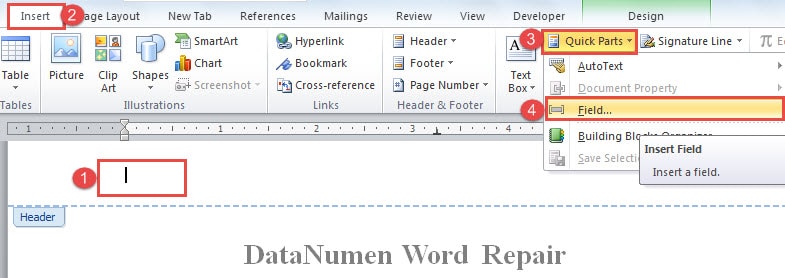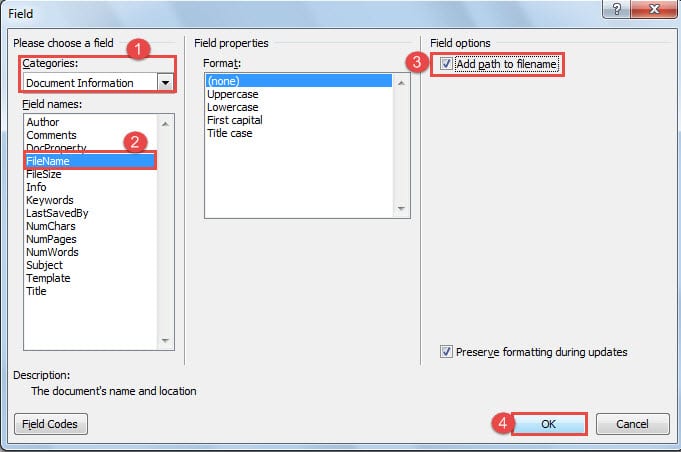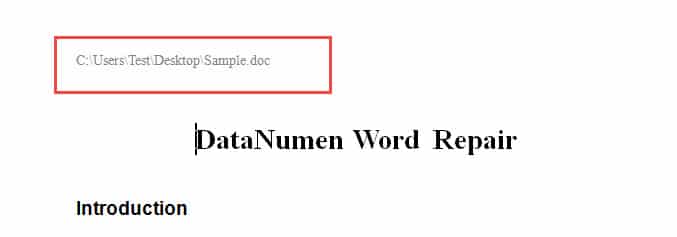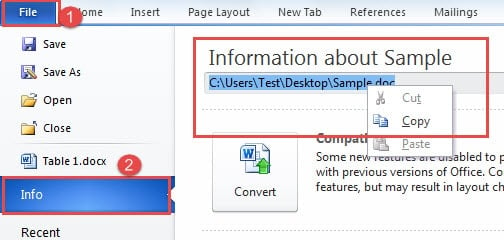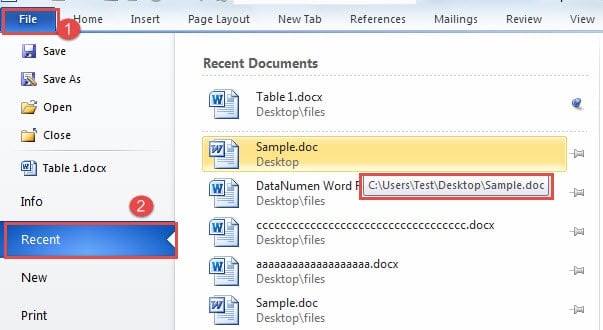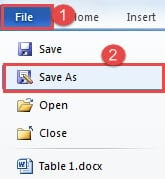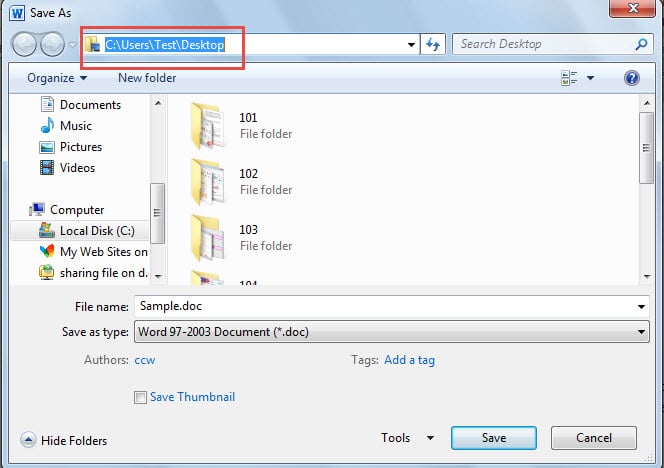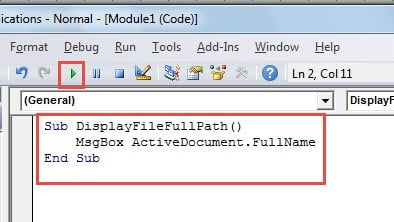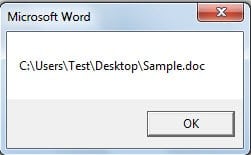In this article, we will talk about 6 quick ways to help you with viewing and getting the Full path of your Word document file.
From time to time, there is the need to view and get the full path of a Word document. For instance, you are working in a team, and you may need to share files with your colleagues. Then make the file path clear to see can greatly improve working efficiency. Or there are times when you need to access to others files stored on the same location where the current open document is.
Honestly, it’s not a complicated task, and there are ways out there.
Method 1: Add “Document Location” Command to “Quick Access Toolbar”
Normally, the commands in the Ribbon are ones we use most. However, there are many commands off the Ribbon and can be really useful sometimes. “Document Location” is one of those.
- At first, click “File” tab in Word and then “Options”.
- In the “Word Options” dialog box open, click “Quick Access Toolbar” first.
- Then choose “Commands Not in the Ribbon” from the drop-down list.
- Next find and click on the “Document Location” command.
- Click “Add” then.
- Finally, click “OK”.
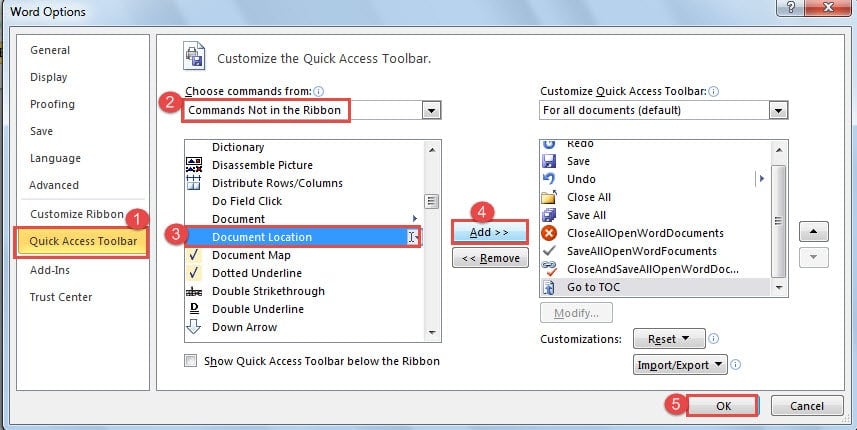
Now you can see the full path of the file showing on the “Document Location” box.
Method 2: Insert File Name to Header or Footer
You can also choose to insert a field displaying the file path to header or footer so they can appear on every page of the document.
- First and foremost, double click on the header area to enter it.
- Next, click “Insert” tab.
- Then click “Quick Parts” in “Text” group.
- And choose “Field” on the list.
- Now in the “Field” dialog box, choose “Document Information” for category.
- Next select “FileName” for “Field names”.
- Then in “Field options” part, you must check “Add path to filename” box.
- Next, click “OK” and double click on non-header area to exit.
Method 3: Check the Information in Backstage View
If you have opened a Word file, there is the relative information about it in the backstage view. You can see them by clicking “File” tab. By default, the “Info” id displayed. You can see the file path of the document on the right side.
Method 4: View through the Recent Files
- Click “File” tab.
- Then click “Recent”. You can see a list of recent document names on the right side.
- Just hover your cursor over the file name, and you will see the full path of where it’s stored. Normally, the document you currently open is on the top of the list, so you can easily find it. If you ever pin a document there, then the next file below is the document you are viewing. And there is also the “Recent Places” list, where you can directly go to open the file folder through the “Open” window.
Method 5: Use the “Save As” Window
Generally, the file you open has been saved before. So click “File” and then click “Save As”. On the “Save As” window, you can clearly see the full path.
Method 6: Make Use of VBA Codes
- At first, press “Alt+ F11” to open the VBA editor.
- Next just paste the following codes and click “Run”:
Sub DisplayFileFullPath() MsgBox ActiveDocument.FullName End Sub
You will be greeted with a message box, in which is the full path of the file.
Comparison of 6 Methods
| Methods | Advantages | Disadvantages |
| Method 1: Add “Document Location” Command to “Quick Access Toolbar” | 1. You can see the file location directly on the “Quick Access Toolbar”.
2. You can copy the path. |
The command box size is fixed, so you can’t view the full path at a glance sometimes. |
| Method 2: Insert File Name to Header or Footer | 1. The file path will appear on every page of the document.
2. You can copy the path. |
You have to enter the header or footer before you are able to copy the path. |
| Method 3: Check the Information in Backstage View | You can copy the path. | Every time you have to switch back to backstage view to see the path. |
| Method 4: View through the Recent Files | 1. You can copy the path.
2. You can open other files stored in the same location. |
You have to switch back to backstage view. |
| Method 5: Use the “Save As” Window | You can copy the path. | You have to repeat steps every time you need to view a file path. |
| Method 6: Make Use of VBA Codes | You can add the macro to “Quick Access Toolbar” to quickly view the path next time. | You can’t copy the path from the message box. |
Prevent Word from Crashing down
Any software can fail. So does Word. But the truth is Word collapses due to user errors more often than not. Thus, to form a good habit of using Word is a critical way to avoid crashes. And if it ever breaks down, choose a proficient Word damage fix tool can be helpful.
Author Introduction:
Vera Chen is a data recovery expert in DataNumen, Inc., which is the world leader in data recovery technologies, including Excel problem recovery utility and pdf repair software products. For more information visit www.datanumen.com
